|
|
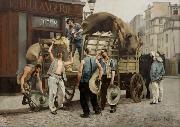 |
Louis Carrier-Belleuse
|
|
(1848-1913) was a French painter and sculptor.
He was son and pupil of Albert-Ernest Carrier-Belleuse. He designed the patterns of the Faïencerie (earthenware factory) from Choisy-le-Roi, where he was artistic director. He was also the sculptor of the Equestrian monument to General Manuel Belgrano
|
|
 |
Louis Gallait
|
|
(9 or 10 May 1810 - 20 November 1887) was a Belgian painter. His d his reputation especially with the large painting of Charles V's abdication. Gallait's works were considered as the basis for a desirable renewal of historical paintings because of the realism, costume faithfulness and colorful posture of his paintings. His last artwork was sent on tour in Germany and that led to new signals even among German historians. He was also a distinguished portrait painter.
Gallait died in Brussels in 1887. There is a painting by Louis Gallait at the Norton Art Museum in West Palm Beach, Florida ("Art and Liberty").
|
|
|
|
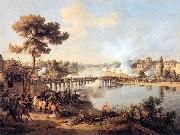 |
Louis-Francois, Baron Lejeune
|
|
(3 February 1775, Strasbourg - 29 February 1848) was a French general, painter, and lithographer. His memoirs have frequently been republished and his name is engraved on the Arc de Triomphe.
He studied painting in the studio of Pierre-Henri de Valenciennes, alongside Jean-Victor Bertin, but left the studio to volunteer in the Compagnie des arts de Paris in 1792. He received his baptism of fire in the battle of Valmy later that year. He became a sergeant in the 1st Arsenal battalion and in 1793 moved to the artillery at La Fere, assisting in the sieges of Landrecies, Le Quesnoy and Valenciennes. At Valenciennes he became aide-de-camp to general Jacob then, as a lieutenant on attachment to the engineers, took part in the 1794 Holland campaign and the 1795 campaign.
Called to the depot in 1798, he succeeded brilliantly in his exams and was made a captain on attachment to the engineers. He became aide-de-camp to marshal Berthier in 1800, a post he retained until 1812 and in which he took an active part in practically all of the Napoleonic campaigns. He was wounded and captured in Spain. He was promoted to full captain after Marengo and chef de bataillon after Austerlitz, also become a knight of the Legion d'honneur and a colonel at the Siege of Saragossa.
The German campaign of 1806 brought him to Munich, where he visited the workshop of Alois Senefelder, the inventor of lithography. Lejeune was fascinated by the possibilities of the new method and whilst there he made the drawing on stone of his famous Cossack (printed by C. and ~f. Senefelder, 1806). Whilst he was taking his dinner, and with his horses harnessed and waiting to take him back to Paris, one hundred proofs were printed, one of which he subsequently submitted to Napoleon. The introduction of lithography into France was greatly due to the efforts of Lejeune.
In 1812, during the French invasion of Russia, he was made general de brigade and chief of staff to Davout. Frostbitten on the face, Lejeune left his post during the retreat from Russia and was arrested on the orders of Napoleon. Freed in March 1813, Lejeune was then sent to the Illyrian provinces, before rejoining the army under the orders of marshal Oudinot, becoming his chief of staff. During the Saxony campaign, Lejeune was present at the Battle of Lutzen (1813), the crossing of the River Spree and at Bautzen. He was made an officer of the Legion d'honneur and a commander of the Order of Maximilian of Bavaria. At the battle of Hoyersverda, when Below's corps wiped out the 12th corps formed up in square on the plain, Lejeune (at risk of being kidnapped) ventured into the enemy lines with one battalion, general Wolf's cavalry and six 12 pounder guns. He thus broke the whole of the Prussian artillery and saved marshal Oudinot and his army. Wounded several times and lastly at Hanau, he was authorised to leave the army in November 1813 after more than 20 years' service. After his departure from the army, he devoted himself to painting.
|
|
|
|
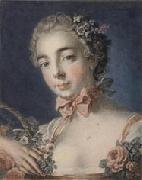 |
Louis-Marin Bonnet
|
|
French, 1736 - 1793
French engraver and publisher. He came from a family of artisans and owed his training in engraving to his brother-in-law, the engraver Louis Legrand (1723-1808). Through Legrand, Bonnet became the pupil of Jean-Charles Francois in 1756, a year before the latter discovered the CRAYON MANNER technique of engraving, designed to reproduce the effect of a coloured-chalk drawing. Around the end of 1757 Bonnet used the new technique to engrave a Cupid after Francois Eisen. Gilles Demarteau, a rival of Jean-Charles Francois |
|
 |
Louise-Catherine Breslau
|
|
(6 December 1856 - 12 May 1927) was a German/Swiss artist.
Born Maria Luise Katharina Breslau in Munich, Germany, she spent her childhood in Zurich, Switzerland and as an adult made Paris, France her home. Suffering from asthma all her life, Breslau turned to drawing as a child to help pass the time while confined to her bed. Although she became one of the most sought after portraitists of her time, after her death she and her work were all but forgotten. It has only been in the past few years that interest in Breslau and her works has been growing.
Breslau was born into a prosperous bourgeois family; her father was a well-respected physician specializing in obstetrics and gynecology. When Breslau was two years old, her father accepted the position of professor and head physician of Obstetrics and Gynecology at the University of Zurich; Switzerland became home to the Breslau family. |
|
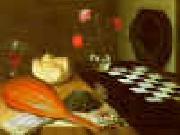 |
Lubin Baugin
|
|
1610-1663
French
Lubin Baugin Gallery
French painter. He became a master in the painters guild of Saint-Germain-des-Pras in 1629. From c. 1636 he was in Italy, but he is known to have been in Paris again in 1641; in 1645 he became a member of the Acadmie de St Luc, and in 1651 he was also a member of the Acadmie Royale after the temporary amalgamation of the two institutions. Like many of his generation he was deeply influenced by the art of the Fontainebleau school. |
|
|
|
 |
Ludolf Backhuysen
|
|
b.Dec. 18, 1631, Emden, East Frisia [Germany]
d.Nov. 17, 1708, Amsterdam, Neth.
Dutch
Ludolf Backhuysen Gallery |
|
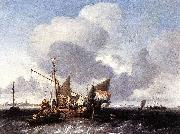 |
Ludolf Bakhuizen
|
|
(December 28, 1630 - November 17, 1708) was a German-born Dutch Golden Age painter who was the leading Dutch painter of maritime subjects after the two Willem van de Veldes (father and son) left for England in 1672.
He was born in Emden, East Frisia, and came to Amsterdam in about 1650, working as a merchant's clerk and a calligrapher. He discovered so strong a genius for painting that he relinquished the business and devoted himself to art from the late 1650s, initially in pen drawings. He studied first under Allart van Everdingen and then under Hendrik Dubbels, two eminent masters of the time, and soon became celebrated for his sea-pieces, which often had rough seas.
He was an ardent student of nature, and frequently exposed himself on the sea in an open boat in order to study the effects of storms. His compositions, which are numerous, are nearly all variations of one subject, the sea, and in a style peculiarly his own, marked by intense realism or faithful imitation of nature. In his later years Bakhuizen employed his skills in etching; he also painted a few examples each of several other genres of painting, such as portraits, landscapes and genre paintings. |
|
|
|
|
|
 |
ludwig van beethoven
|
|
Born: December 1770
Birthplace: Bonn, Germany
Died: 26 March 1827 (cirrhosis of the liver, plus dropsy)
Best Known As: The composer of Beethoven's Fifth |
|
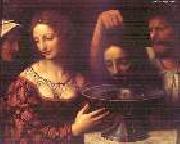 |
LUINI, Bernardino
|
|
Italian High Renaissance Painter, ca.1480-1532
Italian painter and draughtsman. He was one of the generation of Lombard painters active around 1500 who, influenced by Leonardo and Raphael, blended High Renaissance innovations with indigenous Milanese elements to create a Lombard Renaissance style. Luini's paintings were extremely popular with both collectors and critics from c. 1790 to the end of the 19th century. This widespread popularity, however, had unfortunate consequences: many of his frescoes were detached from their original settings, many of the panel paintings were transferred to canvas and other works were heavily restored. As a result few survive in a good state. About 700 works are attributed to Luini, but many of these attributions are over optimistic.
|
|
 |
magdalene margrethe barens
|
|
Magdalene Margrethe Bärens, född 1737, död 1808, var en dansk konstnär; hon blev den första kvinnliga konstnären i Danmark som valdes in i den danska konstakademin år 1780.
Hon var en av de få kvinnliga konstnärerna kända i Skandinavien före 1800-talet, tillsammans med Ulrika Pasch i Sverige och Helena Arnell i Finland. I Danmark var även Johanne Marie Fosie känd under samma tid. |
|
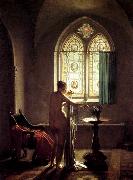 |
MALLET, Jean-Baptiste
|
|
French Painter, 1759-1835,French painter. A pupil of Simon Julien in Toulon, he was then taught by Pierre-Paul Prud'hon in Paris. He exhibited at every Salon between 1793 and 1827, obtaining a second class medal in 1812 and a first class medal in 1817. He executed very few portraits (Chenier, Carcassonne, Mus. B.-A., is an exception), preferring to paint nymphs bathing and graceful classical nudes such as the Graces Playing with Cupid (Arras, Abbaye St Vaast, Mus. B.-A.). He established his reputation with gouache genre scenes of fashionable and often libertine subjects, always elegant and refined, in the style of Louis-Philibert Debucourt and Louis-Leopold Boilly, and remarkable for the delicacy and brilliance of their brushwork: for example At the Laundry Maid's and the Painful Letter (both Paris, Mus. Cognacq-Jay). They reveal a knowledge of 17th-century Dutch painting in the treatment of details (transparent crystal, reflections on silk or satin) as well as the choice of themes: Military Gallant (Paris, Mus. Cognacq-Jay). Mallet's meticulously precise paintings are one of the best records of fashionable French furnishings and interiors at the end of the 18th century and the beginning of the 19th. |
|
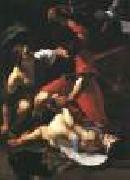 |
MANFREDI, Bartolomeo
|
|
Italian Baroque Era Painter, 1582-1622
Italian painter. In the 17th century he was known throughout Italy and beyond as Caravaggio's closest follower and his works were highly prized and widely collected. More than simply aping Caravaggio's style, Manfredi reinterpreted his subjects and rendered new ones, drawing upon Caravaggio's naturalism and dramatic use of chiaroscuro. His paintings were often praised by his contemporaries as equal to Caravaggio's and he was subsequently emulated and imitated by other Roman Caravaggisti during the 1610s and 1620s. Yet by the 18th century his works were forgotten or confused with those of Caravaggio himself, |
|
|
|
|
|
 |
Marcello Bacciarelli
|
|
16 February 1731 - 5 January 1818) was an Italian painter of the late-baroque and Neoclassic periods.
He studied in Rome under Marco Benefial. In 1750 he was called to Dresden, Saxony, where he was employed by Elected King Augustus III of Poland; after whose death he went to Vienna, and thence to Warsaw. There he met and worked by the side of Italian painter in Dresden, Vienna and Warszawa , Bernardo Bellotto. He was the Director there of the new set up Academy of Arts of Warsaw.He painted a set of the Polish kings, from Boleslaus Chrobry downwards. That of Stanislaus II, Stanisław August Poniatowski has been engraved by A. de Marcenay de Ghuy, Kestner, and A. Fogg. Bacciarelli also painted scenes from the History of Poland. He died at Warsaw.
A number of his paintings were painted for King Stanisław August Poniatowski of Poland and are in the Royal Castle in Warsaw. |
|
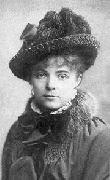 |
Marie Bashkirtseff
|
|
(Russian: November 11, 1858 October 31, 1884) was a Ukrainian-born Russian diarist, painter and sculptor.
Marie BashkirtseffBorn Maria Konstantinovna Bashkirtseva in Gavrontsy near Poltava, to a wealthy noble family, she grew up abroad, traveling with her mother across most of Europe. Educated privately, she studied painting in France at the Acad??mie Julian, one of the few establishments that accepted female students. The Acad??mie attracted young women from all over Europe and the United States. One fellow student was Louise Breslau who Marie viewed as her only rival. Marie would go on to produce a remarkable body of work in her short lifetime, the most famous being the portrait of Paris slum children titled The Meeting and In the Studio, (shown here) a portrait of her fellow artists at work. Unfortunately, a large number of Bashkirtseff's works were destroyed by the Nazis during World War II.
From the age of 13, she began keeping a journal, and it is for this she is most famous. Her personal account of the struggles of women artists is documented in her published journals, which are a revealing story of the bourgeoisie. Titled, I Am the Most Interesting Book of All, her popular diary is still in print today. The diary was cited by an American contemporary, Mary MacLane, whose own shockingly confessional diary drew inspiration from Bashkirtseff's. Her letters, consisting of her correspondence with the writer Guy de Maupassant, were published in 1891.
The grave of Marie BashkirtseffDying of tuberculosis at the age of 25, Bashkirtseff lived just long enough to become an intellectual powerhouse in Paris in the 1880s. A feminist, in 1881, using the nom de plume "Pauline Orrel," she wrote several articles for Hubertine Auclert's feminist newspaper, La Citoyenne. One of her famous quotes is: Let us love dogs, let us love only dogs! Men and cats are unworthy creatures. |
|
 |
Marie Bracquemond
|
|
French Impressionist Painter, 1840-1916
.was a French Impressionist artist described by Gustave Geffroy in 1894 as one of the "le trois grandes dames" of Impressionism alongside Berthe Morisot and Mary Cassatt.However, her often omission from books on women artists indicate the success of her husband, F??lix Bracquemond, in his campaign to thwart her development as an artist. |
|
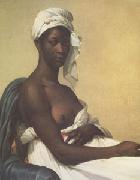 |
Marie-Guillemine Benoist
|
|
Paris 1768-1826
was a French neoclassical, historical and genre painter. She was born in Paris, the daughter of a civil servant. Her training as an artist began in 1781 under Élisabeth Vigee Le Brun, and she entered Jacques-Louis David's atelier in 1786 along with her sister Marie-Élisabeth Laville-Leroux. The poet Charles-Albert Demoustier, who met her in 1784, was inspired by her in creating the character Émile in his work Lettres Émilie sur la mythologie (1801). In 1791 she exhibited for the first time in the Salon de Paris, displaying her mythology-inspired picture Psych faisant ses adieux sa famille. Another of her paintings of this period, L'Innocence entre la vertu et le vice, is similarly mythological and reveals her feminist interests in this picture, vice is represented by a man, although it was traditionally represented by a woman. In 1793, she married the lawyer Pierre-Vincent Benoist. Her work, reflecting the influence of Jacques-Louis David, tended increasingly toward history painting by 1795. In 1800, she exhibited Portrait d'une negresse in the Salon. Six years previously, slavery had been abolished, and this image became a symbol for women's emancipation and black people's rights. This picture was acquired by Louis XVIII for France in 1818. An important commission, for a full-length portrait of Napol on Bonaparte Premier Consul Français in this period was awarded to her in 1803. This portrait was to be sent to the city of Ghent, newly ceded to France by the Treaty of Luneville in 1801. Other honors came to her; she was awarded a Gold Medal in the Salon of 1804, and received a governmental allowance. During this time she opened an atelier for the artistic training of women. Her career was harmed by political developments, however, when her husband, the convinced royalist count Benoist, was nominated in the Conseil d'État during the post-1814 monarchy come-back called the Bourbon Restoration. |
|
|
|
|
|
 |
Mary Beale
|
|
English Baroque Era Painter, 1633-1699
was an English portrait painter. She became one of the most important portrait painters of 17th century England, and has been described as the first professional female English painter. Beale was born in Barrow, Suffolk, the daughter of John Cradock, a Puritan rector. Her mother, Dorothy, died when she was 10. She married Charles Beale, a cloth merchant from London, in 1652, at the age of 18. Her father and her husband were both amateur painters, her father being a member of the Painter-Stainers' Company, and she was acquainted with local local artists, such as Nathaniel Thach, Matthew Snelling, Robert Walker and Peter Lely. She became a semi-professional portrait painter in the 1650s and 1660s, working from her home, first in Covent Garden and later in Fleet Street. The family moved to a farmhouse in Allbrook, Hampshire in 1665 due to financial difficulties, her husband having lost his position as a clerk of patents, and also due to the Great Plague in London. For the next five years, a 17th-century two storey timber-framed building was her family home and studio. She returned to London in 1670, where she established a studio in Pall Mall, with her husband working as her assistant, mixing her paints and keeping her accounts. She became successful, and her circle of friends included Thomas Flatman, poet Samuel Woodford, Archbishop of Canterbury John Tillotson, and Bishops Edward Stillingfleet and Gilbert Burnet. She became reacquainted with Peter Lely, now Court Artist to Charles II. Her later work is heavily influenced by Lely, being mainly small portraits or copies of Lely's work. Her work became unfashionable after his death in 1680. |
|
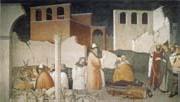 |
Maso di Banco
|
|
Italian Early Renaissance Painter, active 1320-1350 |
|
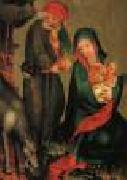 |
MASTER Bertram
|
|
German painter (b. cca. 1345, Minden, d. 1415, Hamburg).
was a German International Gothic painter primarily of religious art. His most famous surviving work is the large Grabow Altarpiece (or Petri-Altar) in the Kunsthalle Hamburg, the largest and most important North German painting of the period. There is a 45-scene altarpiece of the Apocalypse, probably by his workshop, in the Victoria and Albert Museum in London. He, or his workshop, also produced sculpture, presumably in wood; in fact in his first years in Hamburg most surviving documentation relates to sculpture, including chandeliers. He is first recorded in Hamburg in 1367, and lived there for the rest of his life, becoming a citizen and Master in 1376, and achieving considerable prosperity. In 1390 he made a will in advance of an intended pilgrimage to Rome, but if he made the journey it had no detectable influence on his art. He was married, but his wife had died by his second will in 1410, when he had a surviving daughter. His style is less emotional than that of his Hamburg near-contemporary Master Francke, but has great charm. Bertram was largely forgotten after the Renaissance until the end of the 19th century |
|
|
|
|
|
|
|
|
|
|
|
|
|
 |
Mather Brown
|
|
American Painter, 1761-1831
was a portrait and historical painter, born in Boston, Massachusetts but active in England. Brown was the son of Gawen and Elizabeth (Byles) Brown, and descended from the Rev. Increase Mather on his mother's side. He was taught by his aunt and around 1773 (age 12) became a pupil of Gilbert Stuart. He arrived in London in 1781 to further his training in Benjamin West's studio, entered the Royal Academy schools in 1782 with plans to be a miniature painter, and began to exhibit a year later. In 1784 he painted two religious paintings for the church of St Mary??s-in-the-Strand, which led Brown to found a partnership with the painter Daniel Orme for the commercialization of these and other works through exhibition and the sale of engravings. Among these were large paintings of scenes from English history, as well as scenes from Shakespeare's plays. However, despite their success he began to concentrate on portraiture. His first successes were with American sitters, among others his patron John Adams and family in 1784?C85; this painting is now in the Boston Athenaeum. In 1785?C86 he painted the first portrait of Thomas Jefferson, who was visiting London. He also painted Sir William Pepperrell. His 1788 full-length portrait of Prince Frederick Augustus in the uniform of Colonel of the Coldstream Guards led to appointment as History and Portrait Painter to the Prince, later the Duke of York and Albany. Other paintings include the Prince of Wales, later George IV (about 1789), Queen Charlotte, and Cornwallis. A self-portrait now belongs to the American Antiquarian Society, Worcester, Massachusetts. A falling off of patronage in the mid-1790s, and failure to be elected to the Royal Academy, led Brown to leave London in 1808 for Bath, Bristol, and Liverpool. |
|
|
|
 |
Mattheus Ignatius van Bree
|
|
was a Belgian painter, sculptor and architect.
He was born at Antwerp in 1773, was instructed by Regemorter; he afterwards went to Paris, and after having obtained by a 'Cato in Utica' the second prize for Rome, he went to that city in 1797e returning to his native country in 1804.[1] He painted numerous historical pictures, some of which are of large dimensions, and obtained a high reputation in Flanders. His conceptions are frequently poetical, and his compositions graceful, delineated with a light, free, and spirited pencil ; but his colouring is rather too florid in some instances.
He was first professor at the Academy of Fine Arts at Antwerp, and in 1827 its director. Member of several other scientific institutions like the academies of Amsterdam, Rome, Munich and New York. Among his most important works are 'The Patriotism of the Burgomaster Van der Werft,' in the Town-Hall at Leyden, and 'The Death of Rubens,' in the Museum at Antwerp. He brought forward some of the most eminent of the later Flemish painters, among whom are Wappers, De Keyser, F. de Braekeleer, and others of whom their country is justly proud. Van Bree died at Antwerp in 1839.
|
|
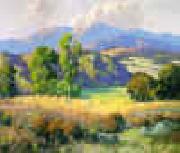 |
Maurice Braun
|
|
1877-1941
Maurice Braun (1877-1941) was an American artist who became known for wonderful Impressionist landscapes of southern California. He was born in Hungary on October 1, 1877, however by the age of four young Maurice and the Braun family had migrated to the United States and settled in New York City. His professional studies took him to the National Academy of Fine Arts where he studied the French tradition under Francis C. Jones, George W. Maynard and Edgar M. Ward. In 1901 Braun trained under the famous American painter William Merritt Chase (1849-1916). He established himself as a figure and portrait painter in New York City, but in 1909 he left for California where he was inspired and reveled in the new colors, forms, light and atmosphere of the region -- his paintings reflect a deep respect and appreciation for nature. Maurice Braun died in San Diego, California on November 7, 1941. |
|
 |
Maurice Brazil Prendergast
|
|
(October 10, 1858 - February 1, 1924) was a U.S. Post-Impressionist artist who worked in oil, watercolor, and monotype. Technically, he was a member of The Eight, but the delicacy of his compositions and mosaic-like beauty of his designs had little in common with the philosophy of the group.
Prendergast was born in St. John's, a city in Newfoundland, Canada. With the failure of his father's subarctic trading post, the family moved to Boston. |
|
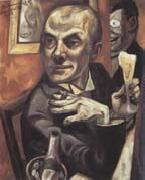 |
Max Beckmann
|
|
1884-1950
was a German painter, draftsman, printmaker, sculptor, and writer. Although he is usually classified as an Expressionist artist, he rejected both the term and the movement. In the 1920s he was associated with the New Objectivity (Neue Sachlichkeit), an outgrowth of Expressionism that opposed its introverted emotionalism. He was born into a middle-class family in Leipzig, Saxony. From his youth he pitted himself against the old masters. His traumatic experiences of World War I, in which he served as a medic, coincided with a dramatic transformation of his style from academically correct depictions to a distortion of both figure and space, reflecting his altered vision of himself and humanity.He is known for the self-portraits he painted throughout his life, their number and intensity rivalled only by Rembrandt and Picasso. Well-read in philosophy and literature, he also contemplated mysticism and theosophy in search of the "Self". As a true painter-thinker, he strove to find the hidden spiritual dimension in his subjects. (Beckmann's 1948 "Letters to a Woman Painter" provides a statement of his approach to art.) In the Weimar Republic of the Twenties, Beckmann enjoyed great success and official honors. In 1927 he received the Honorary Empire Prize for German Art and the Gold Medal of the City of D??sseldorf; the National Gallery in Berlin acquired his painting The Bark and, in 1928, purchased his Self-Portrait in Tuxedo.In 1925 he was selected to teach a master class at the Städelschule Academy of Fine Art in Frankfurt. Some of his most famous students included Theo Garve, Leo Maillet and Marie-Louise Von Motesiczky. His fortunes changed with the rise to power of Adolf Hitler, whose dislike of Modern Art quickly led to its suppression by the state. In 1933, the Nazi government bizarrely called Beckmann a "cultural Bolshevik"and dismissed him from his teaching position at the Art School in Frankfurt. In 1937 more than 500 of his works were confiscated from German museums, and several of these works were put on display in the notorious Degenerate Art exhibition in Munich.For ten years, Beckmann lived in poverty in self-imposed exile in Amsterdam, failing in his desperate attempts to obtain a visa for the US. In 1944 the Germans attempted to draft him into the army, despite the fact that the sixty-year-old artist had suffered a heart attack. The works completed in his Amsterdam studio were even more powerful and intense than the ones of his master years in Frankfurt, and included several large triptychs, which stand as a summation of Beckmann's art. After the war, Beckmann moved to the United States, and during the last three years of his life, he taught at the art schools of Washington University in St. Louis (with the German-American painter and printmaker Werner Drewes) and the Brooklyn Museum. He suffered from angina pectoris and died after Christmas 1950, struck down by a heart attack in Manhattan.Many of his late paintings are now displayed in American museums. |
|
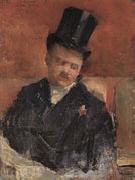 |
Max Buri
|
|
1868-1915,Swiss painter. While still at school he was given drawing lessons by Paul Volmar (1832-1906) in Berne. From 1883 he was a pupil of Fritz Schider (1846-1907) in Basle, where he became acquainted with the works of Hans Holbein the younger and Arnold B?cklin. In 1886 he went to the Akademie der Bildenden K?nste in Munich, transferring in 1887 to Simon Holl?sy painting school. After seeing the works of the French Impressionists exhibited in Munich, he moved to the Acad?mie Julian in Paris in 1889. He made several journeys to Algeria, Holland, Belgium and England, and in 1893 he returned to Munich to study under Albert von Keller. In 1898 he settled in Switzerland, living first at Lucerne, then from 1903 in Brienz, near Interlaken. About 1900, influenced by the paintings of Ferdinand Hodler, Buri moved on from his early genre pictures, which were in mawkish shades of pink in the style of Keller and H?llosy, to achieve an individual style that brought him great popularity. He established his reputation with Village Politicians (1904; Basle, Kstmus.). He painted mainly the landscape and people of the Bernese Oberland, often depicting single figures and groups in front of bare indoor walls in realistic everyday scenes. The expressiveness of the compositions is achieved by clear contours and powerful clearly differentiated surfaces in local colours. Buri works are essentially populist rather than intellectual and avoid Hodler strict parallelism and Symbolist content. |
|
 |
MEI, Bernardino
|
|
Italian painter, Roman school (b. 1612, Siena, d. 1676, Roma)
Italian painter, draughtsman and printmaker. His early art drew on a variety of sources, which included the naturalism of Rutilio Manetti and Francesco Rustici, the descriptive realism of the engraver Giuliano Periccioli (d 1646) and the Baroque of Raffaelle Vanni. Mei's interests even embraced 16th-century Sienese art. This stylistic variety is evident in his first known works, such as a bier (Casole d'Elsa, Collegiata), three signed miniatures in the Libro dei leoni (1634; Siena, Pal. Piccolomini, Archv Stato) and frescoes of scenes from the Life of St Bernard (1639; Siena, oratory of S Bernardino). His experimental approach is also displayed in such works as the Annunciation (Siena, Mus. Semin. Montarioso), which may be dated between the mid-1630s and the early 1640s. Mei's early maturity is marked by a conscious return to the naturalism of Manetti, enriched with a Baroque pathos and soft, fluid brushwork, as in the St Peter in Prison Awoken by the Angel and St Peter Freed by the Angel (both Siena; Conservatori Femminili Riuniti). His interest in both naturalism and the Baroque made him responsive to the art of Mattia Preti, possibly seen in Rome, as in the Beheading of St John the Baptist (1647; Siena, oratory of S Giovannino in Pantaneto) and the frescoes of scenes from the Life of St Roch and Life of St Job (1648; Siena, S Rocco), |
|
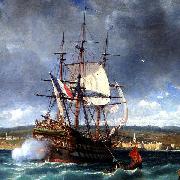 |
Michel Bouquet
|
|
(born 6 November 1925) is a French film actor. He has appeared in over 90 films since 1947. He was born in Paris, France.
|
|
 |
Michelangelo Buonarroti
|
|
b Caprese 1475 d Rome 1564
Born: March 6, 1475
Caprese, Italy
Died: February 18, 1564
Rome, Italy
Italian artist
Michelangelo was one of the greatest sculptors of the Italian Renaissance and one of its greatest painters and architects.
Early life
Michelangelo Buonarroti was born on March 6, 1475, in Caprese, Italy, a village where his father, Lodovico Buonarroti, was briefly serving as a Florentine government agent. The family moved back to Florence before Michelangelo was one month old. Michelangelo's mother died when he was six. From his childhood Michelangelo was drawn to the arts, but his father considered this pursuit below the family's social status and tried to discourage him. However, Michelangelo prevailed and was apprenticed (worked to learn a trade) at the age of thirteen to Domenico Ghirlandaio (1449?C1494), the most fashionable painter in Florence at the time.
After a year Michelangelo's apprenticeship was broken off. The boy was given access to the collection of ancient Roman sculpture of the ruler of Florence, Lorenzo de' Medici (1449?C1492). He dined with the family and was looked after by the retired sculptor who was in charge of the collection. This arrangement was quite unusual at the time.
Early works
Michelangelo's earliest sculpture, the Battle of the Centaurs (mythological creatures that are part man and part horse), a stone work created when he was about seventeen, is regarded as remarkable for the simple, solid forms and squarish proportions of the figures, which add intensity to their violent interaction.
Soon after Lorenzo died in 1492, the Medici family fell from power and Michelangelo fled to Bologna. In 1494 he carved three saints for the church of San Domenico. They show dense forms, in contrast to the linear forms which were then dominant in sculpture.
Rome
After returning to Florence briefly, Michelangelo moved to Rome. There he carved a Bacchus for a banker's garden of ancient sculpture. This is Michelangelo's earliest surviving large-scale work, and his only sculpture meant to be viewed from all sides.
In 1498 the same banker commissioned Michelangelo to carve the Piet?? now in St. Peter's. The term piet?? refers to a type of image in which Mary supports the dead Christ across her knees. Larger than life size, the Piet?? contains elements which contrast and reinforce each other: vertical and horizontal, cloth and skin, alive and dead, female and male.
Florence
On Michelangelo's return to Florence in 1501 he was recognized as the most talented sculptor of central Italy. He was commissioned to carve the David for the Florence Cathedral.
Michelangelo's Battle of Cascina was commissioned in 1504; several sketches still exist. The central scene shows a group of muscular soldiers climbing from a river where they had been swimming to answer a military alarm. This fusion of life with colossal grandeur henceforth was the special quality of Michelangelo's art.
From this time on, Michelangelo's work consisted mainly of very large projects that he never finished. He was unable to turn down the vast commissions of his great clients which appealed to his preference for the grand scale.
Pope Julius II (1443?C1513) called Michelangelo to Rome in 1505 to design his tomb, which was to include about forty life-size statues. Michelangelo worked on the project off and on for the next forty years.
Sistine Chapel
In 1508 Pope Julius II commissioned Michelangelo to decorate the ceiling of the chief Vatican chapel, the Sistine. The traditional format of ceiling painting contained only single figures. Michelangelo introduced dramatic scenes and an original framing system, which was his earliest architectural design. The chief elements are twelve male and female prophets (the latter known as sibyls) and nine stories from Genesis.
Michelangelo stopped for some months halfway along. When he returned to the ceiling, his style underwent a shift toward a more forceful grandeur and a richer emotional tension than in any previous work. The images of the Separation of Light and Darkness, and Ezekiel illustrate this greater freedom and mobility.
After the ceiling was completed in 1512, Michelangelo returned to the tomb of Julius and carved a Moses and two Slaves. His models were the same physical types he used for the prophets and their attendants in the Sistine ceiling. Julius's death in 1513 halted the work on his tomb.
Pope Leo X, son of Lorenzo de' Medici, proposed a marble facade for the family parish church of San Lorenzo in Florence to be decorated with statues by Michelangelo. After four years of quarrying and designing the project was canceled.
Medici Chapel
In 1520 Michelangelo was commissioned to execute the Medici Chapel for two young Medici dukes. It contains two tombs, each with an image of the deceased and two allegorical (symbolic) figures: Day and Night on one tomb, and Morning and Evening on the other.
A library, the Biblioteca Laurenziana, was built at the same time on the opposite side of San Lorenzo to house Pope Leo X's books. The entrance hall and staircase are some of Michelangelo's most astonishing architecture, with recessed columns resting on scroll brackets set halfway up the wall and corners stretched open rather than sealed.
Poetry
Michelangelo wrote many poems in the 1530s and 1540s. Approximately three hundred survive. The earlier poems are on the theme of Neoplatonic love (belief that the soul comes from a single undivided source to which it can unite again) and are full of logical contradictions and intricate images. The later poems are Christian. Their mood is penitent (being sorrow and regretful); and they are written in a simple, direct style.
Last Judgment
In 1534 Michelangelo left Florence for the last time, settling in Rome. The next ten years were mainly given over to painting for Pope Paul III (1468?C1549). |
|
|
|
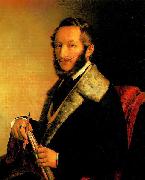 |
Miklos Barabas
|
|
(February 10, 1810 in Mărcuşa, now Romania - February 12, 1898 in Budapest) was a Hungarian painter. He his mostly known for his portrait paintings.
He was born in Kezdimerkosfalva. He spent most of his life in Pest, where he was director of the art society from 1862 until his death. He became a member of the Parliament of Hungary in 1867. He died in Budapest.
|
|
|
|
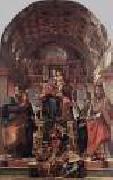 |
MONTAGNA, Bartolomeo
|
|
Italian Early Renaissance Painter, 1450-1523
Painter and draughtsman. Montagna is first documented in 1459 in Vicenza as a minor and, still a minor, in 1467. In 1469 he is recorded as a resident of Venice. In 1474 he was living in Vicenza where, in 1476 and 1478, he was commissioned to paint altarpieces (now lost). He has variously been considered a pupil of Andrea Mantegna (Vasari), Giovanni Bellini, Antonello da Messina, Alvise Vivarini, Domenico Morone and Vittore Carpaccio. While none of these artists, except Carpaccio, was irrelevant to Montagna's stylistic formation, scholars agree that Giovanni Bellini was the primary influence on his art. He may have worked in Bellini's shop around 1470. Several of Montagna's paintings of the Virgin and Child in which the influence of Antonello da Messina is especially marked (e.g. two in Belluno, Mus. Civ.; London, N.G., see Davies, no. 802) are likely to be close in date to Antonello's sojourn in Venice (1475-6); they are therefore best considered Montagna's earliest extant works (Gilbert, 1967) rather than as an unexplained parenthesis around 1485 between two Bellinesque phases (Puppi, 1962). These early paintings appear to be followed by others in which the geometrically rounded forms derived from Antonello become more slender and sharper-edged. Their figures are imbued with a deeply felt, individual humanity, sometimes austere and minatory, sometimes tender. Among them are some larger-scale works, for example the Virgin and Child Enthroned with SS Nicholas and Lucy (Philadelphia, PA, Mus. A.) and a Virgin and Child Enthroned with SS Ansanus, Anthony Abbot, Francis and Jerome |
|
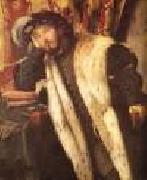 |
MORETTO da Brescia
|
|
Italian High Renaissance Painter, 1498-1554
Italian painter. Together with Romanino and Giovanni Girolamo Savoldo, he was one of the most distinguished painters of Brescia of the 16th century. Influenced by both Lombard verism and contemporary Venetian painters, Moretto created an individual style in which realism and Venetian light and colour were perfectly balanced. He was personally involved in the local movement of Roman Catholic reform, and this is reflected in his direct, solemn and often moving depictions of religious subjects. |
|
|

